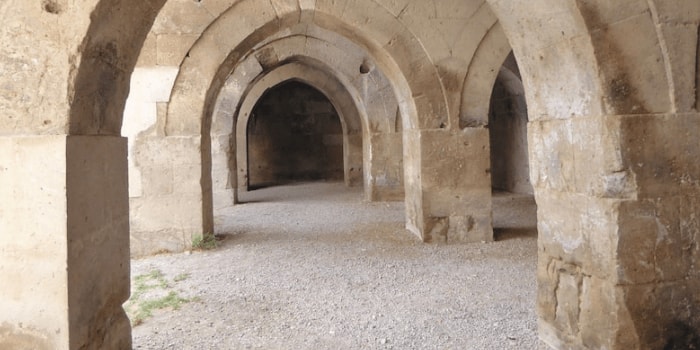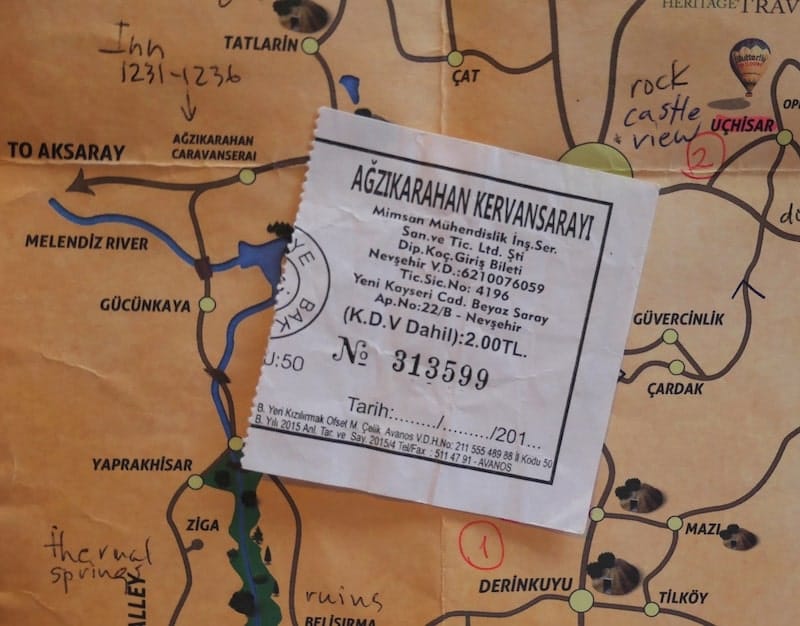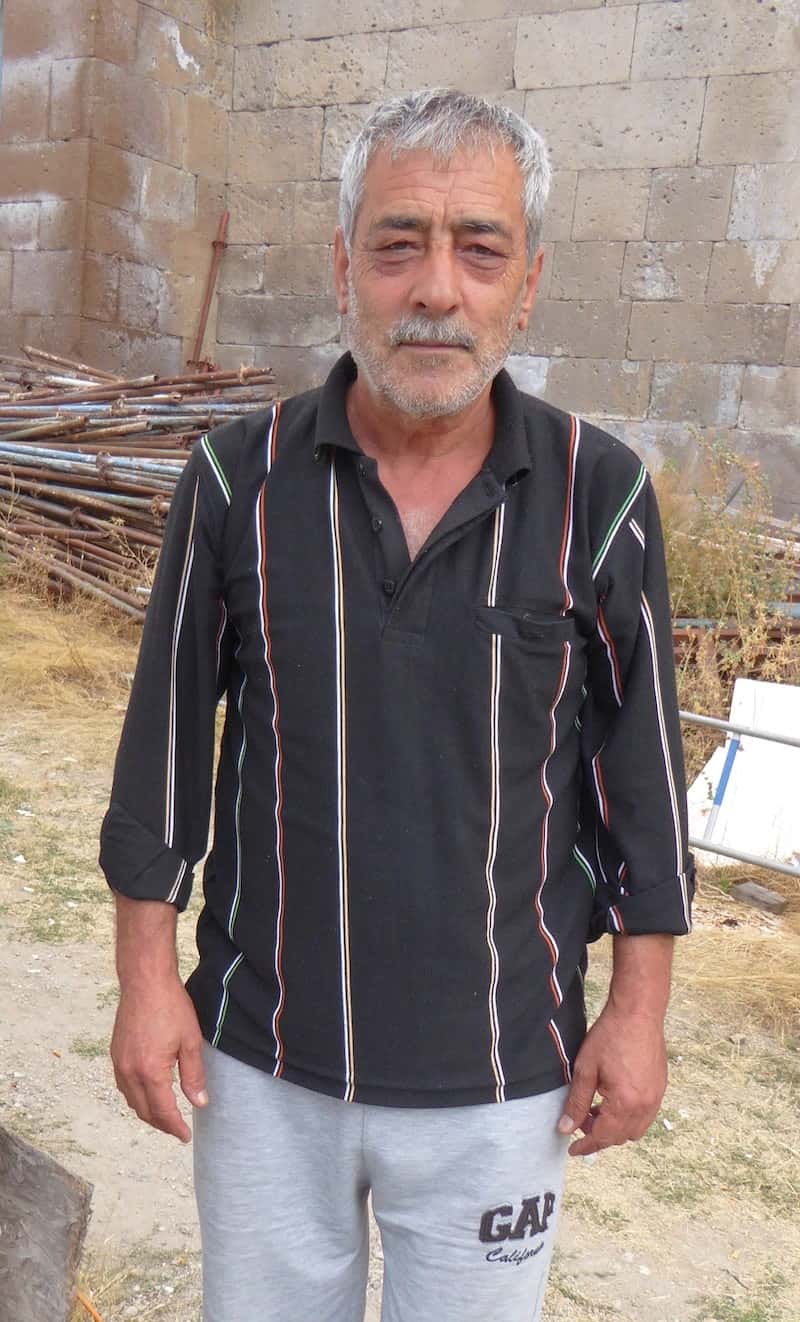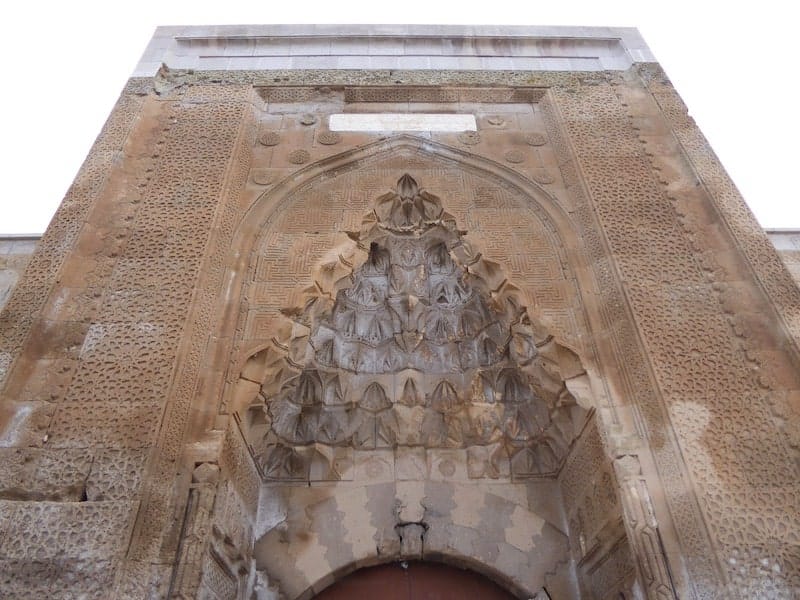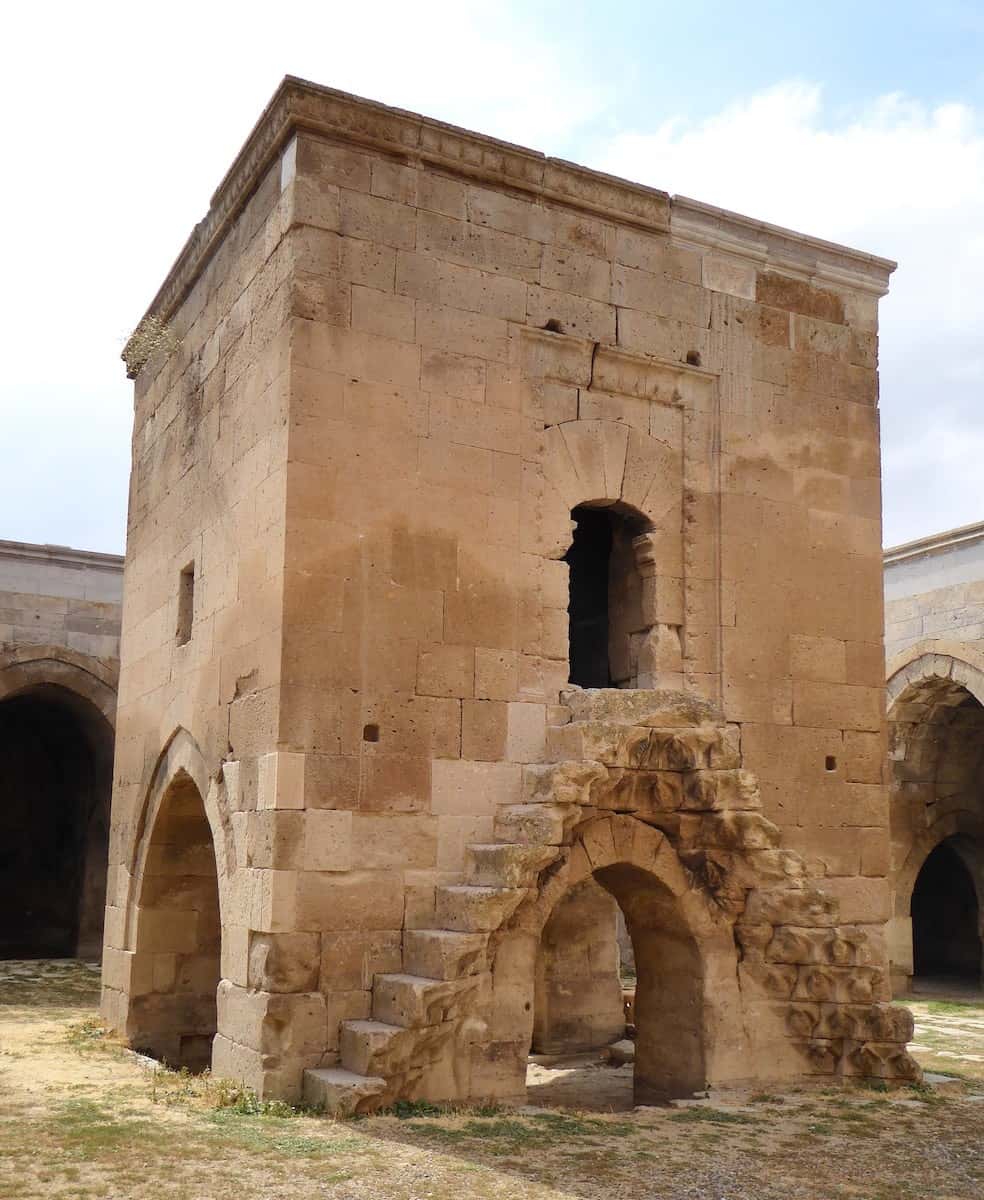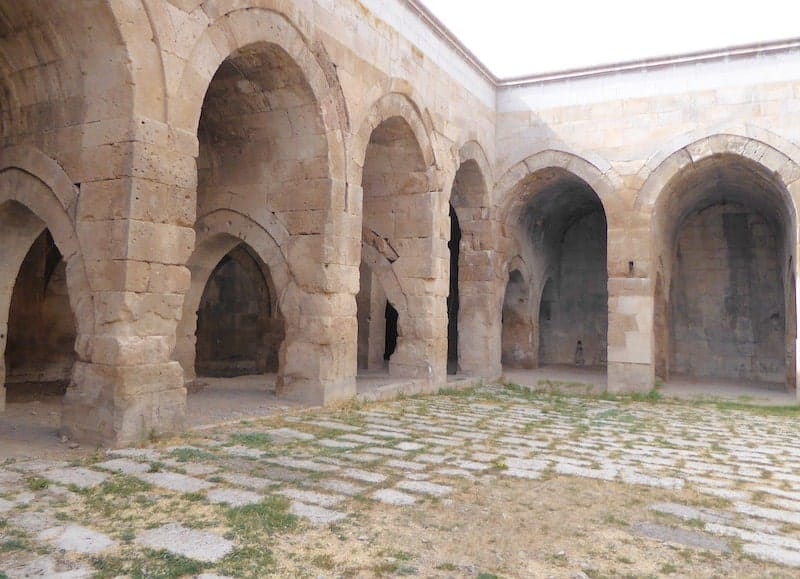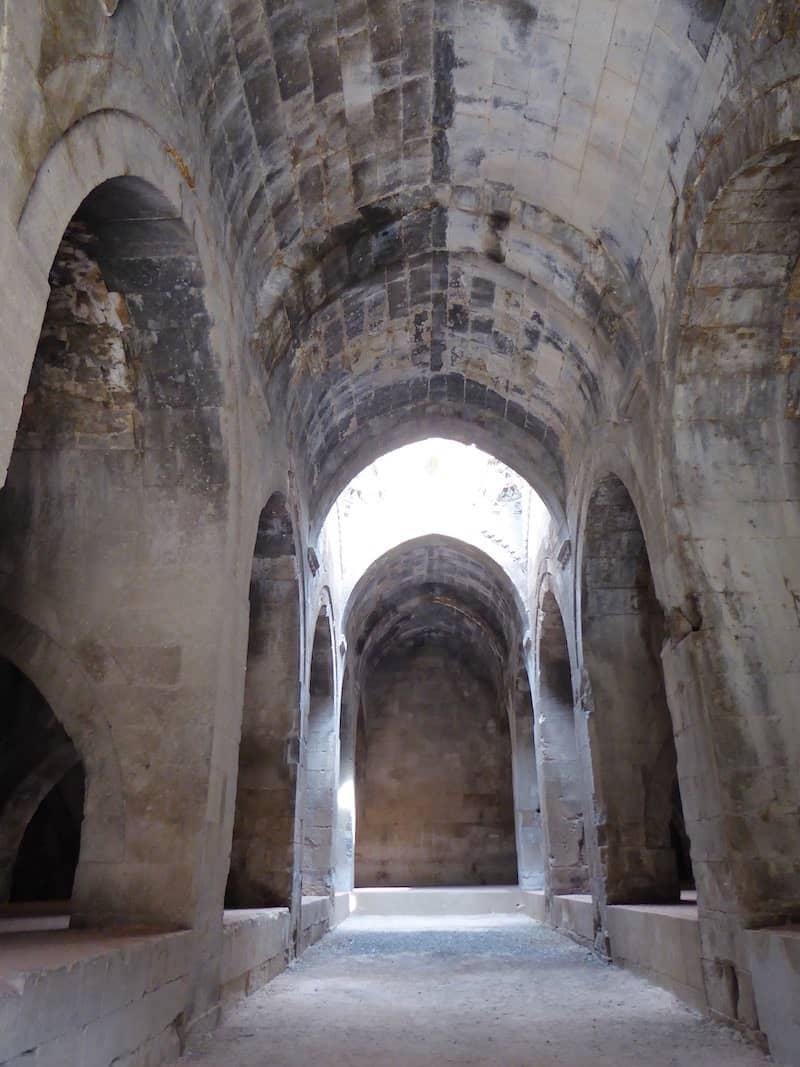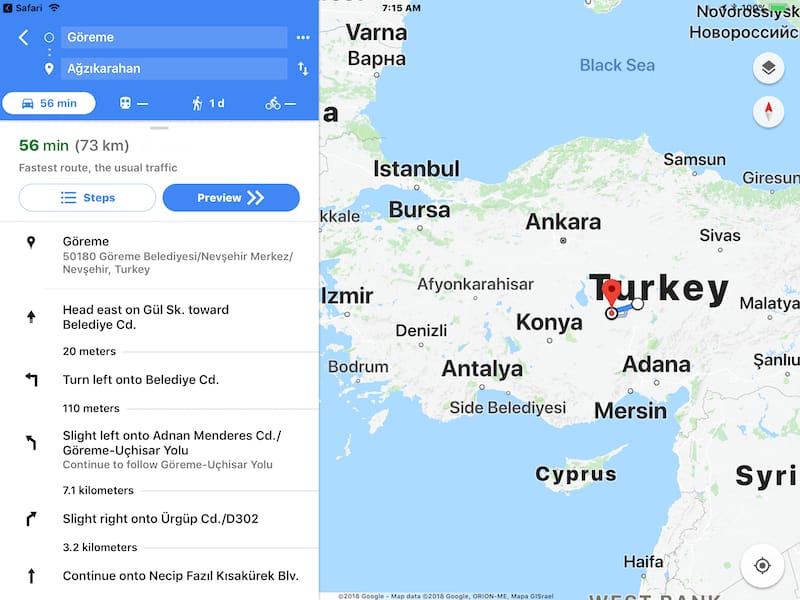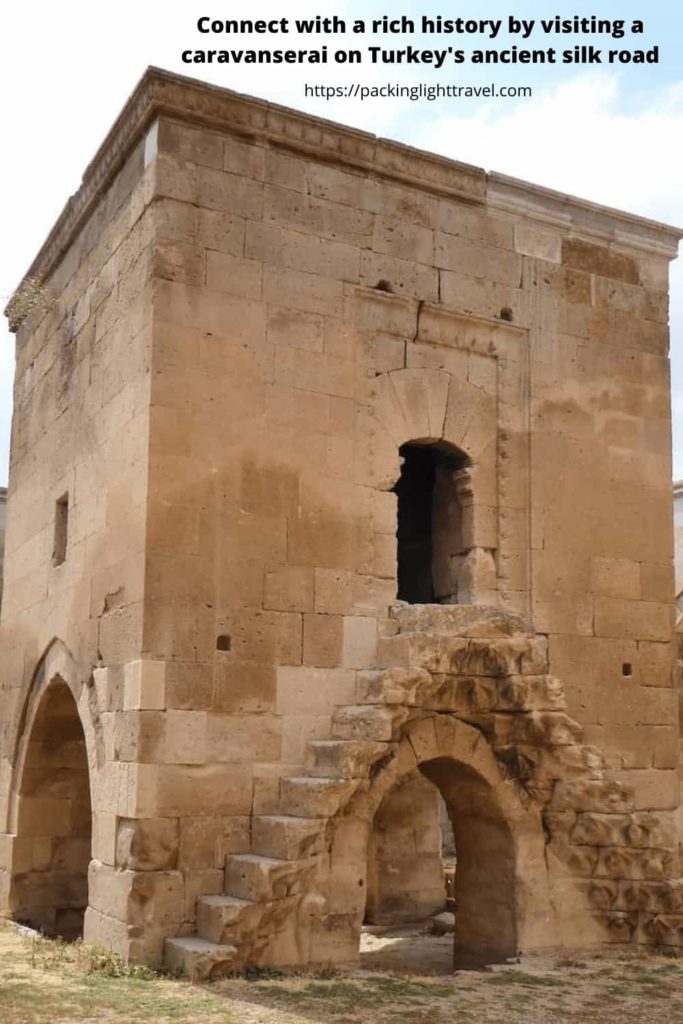You won’t find Ağzıkarahan on any top destinations list. There are no tour buses, souvenir shops, or ticket booths. You might need to search for the caretaker to pay the modest entrance fee. These make visiting a caravanserai on the ancient Silk Road in Türkiye all the more appealing.
Connecting with a rich history
Ağzıkarahan Han (also known as Hoca Mesut Kervansaray) oozes with historical significance. It welcomed travellers centuries ago, as a matter of necessity. It beckons travellers today, out of curiosity. Stand before the massive doors, and images of those early travellers will immediately invade your thoughts. Guaranteed.
It’s not unlike sitting in a worn pew in an old, yet unpretentious village church. There’s no cavernous dome, opulent trimmings, or stunning architecture to distract you from imagining the worshippers who’ve occupied that exact spot for generations.
Ağzıkarahan Han evokes a similar reaction. You’ll imagine what life was like for those earlier travellers and the hardships they endured.
What is Ağzıkarahan Han?
Ağzıkarahan Han is a well-preserved Seljuk caravanserai built between 1231 and 1239. Seljuk rulers were aware of the importance of economic development, and they saw caravanserais as essential to the growth and expansion of trade. As a result, several caravanserais were built in Anatolia (Asian Turkey) during this era.
Caravanserais provided safe accommodation and a range of services. Travellers could stay for up to three nights free of charge. Caravaneers’ belongings were insured by the state against loss during their stay. Goods were checked upon arrival and departure, and any losses were compensated accordingly.
Unfortunately, many caravanserais (kervansaraylar in Turkish) have succumbed to the ravages of time and left to crumble into the landscape. Renewed interest in the Silk Road has resulted in some being transformed into hotels and restaurants. Ağzıkarahan Han is one of the few surviving caravanserais offering an authentic glimpse into what travel along these routes might have been like.
A little background: the silk trade
A relatively recent term, the ‘Silk Road’ describes the historically significant trade routes crisscrossing Eurasia.
The silk trade was one of the earlier catalysts for developing roads that eventually carried a wide range of goods. These included textiles, ceramics, tea, spices, grain, fruit, vegetables, fur, tools, woodwork, metalwork, religious objects, artwork, and precious stones. Many of these goods were bartered for others along the way, often changing hands many times.
Caravanserais spread knowledge and forged relationships
The Silk Roads attracted people interested in participating in the valuable process of cultural and intellectual exchange. To be successful, merchants had to learn other languages. They needed to respect the customs of the countries they passed through. Knowledge about science, arts and literature, as well as crafts and technologies, was shared across the Silk Roads. In this way, languages, religions, and cultures developed and influenced each other.
In some respects, it’s not unlike how many people experience travel today.
Visiting a caravanserai on the ancient Silk Road
When we arrived, I asked the custodian, Sezayi Gozubuyuk, if there was a teahouse nearby. The caravanserai was rather isolated, so the çay (tea) we were craving had to wait. To our surprise, glasses of freshly brewed tea were waiting for us when we finished touring the complex.
Part of the appeal of Ağzıkarahan was the absence of hordes of visitors. It was conducive to appreciating the simple yet majestic beauty of Seljuk architecture. It invited unhurried exploration, observation, and reflection.
Ağzıkarahan Han is a large rectangular complex fortified with high walls and turrets of local stone. It’s very plain, devoid of decorative features. The exception is the main portal. It’s elaborately trimmed with sculpted geometric patterns and inscriptions in Arabic. The absence of human figures, animals, and floral designs was typical of the period.
The heavy door was large enough for a loaded caravan to enter or leave the building. Imagine… standing in the same place where eight centuries earlier, caravaneers and their animals passed through these very portals. Oh my, the joys of travel.
Just after the entrance is the room of the caravanserai’s manager, and a large open courtyard. In the centre of the courtyard is a kiosk mescit (a small pavilion mosque) resting on an arched base.
Around the sides of the courtyard are the service rooms. These housed a hamam (Turkish bath), repair shops, and shelters for animals.
Typically, a caravanserai had the services of a veterinarian, doctor, imam (prayer leader), cook, and blacksmith.
A large, sheltered area, the grand hall accommodated caravaneers and their trade goods. The raised floor made it easier to offload goods.
The dome at the end provided a source of light during daylight hours.
Caravanserais were positioned within a day’s journey of each other, every 30 to 40 kilometres. This allowed travellers to have two meals a day, and sleep, bathe, and pray in a secure environment. They could replenish supplies, repair gear, trade with other merchants, and prepare themselves for the onward journey.
Getting there
Ağzıkarahan is near the village of the same name on the Aksaray-Nevsehir road, 15 kilometres (9 miles) from Aksaray. It’s 70 kilometres (43 miles) from Göreme, and easily reached by road.
Conclusion
Many travellers visit Cappadocia for just a day or two, long enough to experience the fairy chimney landscape from a hot-air balloon.
Cappadocia has so much more to offer. My advice is to spend several days and venture beyond Göreme. Hike the myriad of trails through Love, Pigeon, and Monk Valleys. Take a road trip. Visit underground cities such as Kaymaklı and Derinkuyu. Check out open-air museums, cave churches, the rock-cut castle at Uçhisar, and the verdant Ihlara Valley. Wander around fascinating towns such as Ürgüp, Mustafapaşa, Ortahisar, and Gulşehir. Interact with friendly and hospitable residents.
We found a reasonable price and excellent service from Ismail Degirmenci at the Hertz office in Göreme on a two-day rental of a Renault Symbol.
If you found this post helpful, please share it by selecting one or more social media buttons. Have you visited a caravanserai on the ancient Silk Road? Or have you spent time in Cappadocia? Do tell, in the comments. Thank you.
Might you be interested in my other posts on Türkiye? It’s a fabulous country to visit, a definite favourite of mine.
- Is hot-air ballooning in Turkiye’s Cappadocia worth it?
- When in Turkiye, visit Derinkuyu, an ancient underground city of dazzling proportions
- Istanbul’s ‘Two Markets, Two Continents’ Food Tour by Culinary Backstreets: A review
- Blue cruise on a Turkish gulet off Turkiye’s Turquoise Coast: a luxurious experience at budget prices
- What’s the best mosque to visit in Istanbul?
- Explore Istanbul on a budget: get an Istanbulkart
- What are the best things to do in Istanbul? Use these 35 ideas to plan your visit
- Istanbul’s rainbow stairs
Pin it for later?

